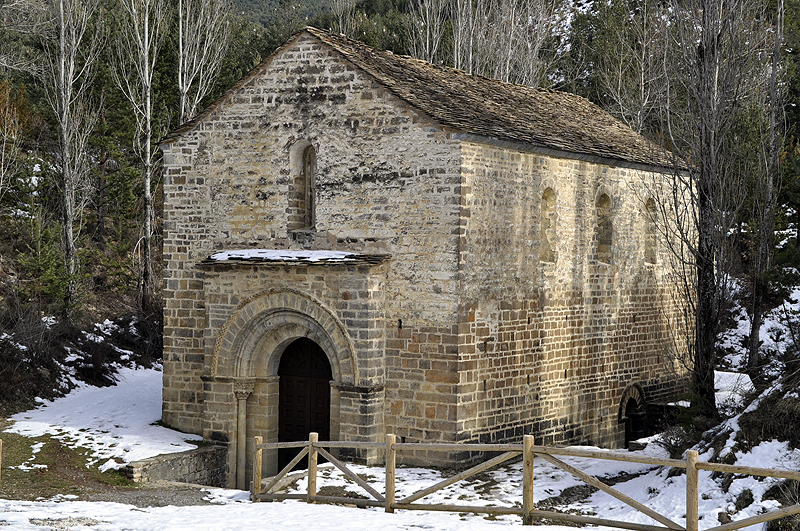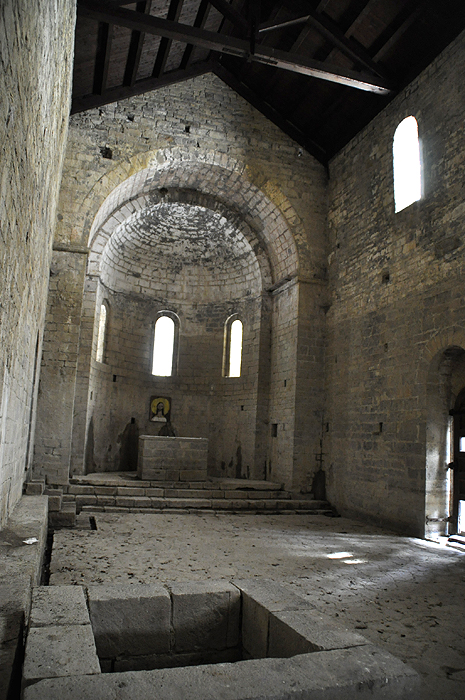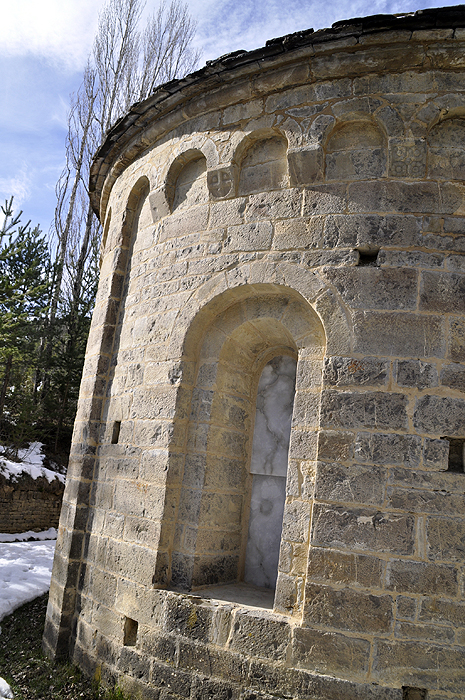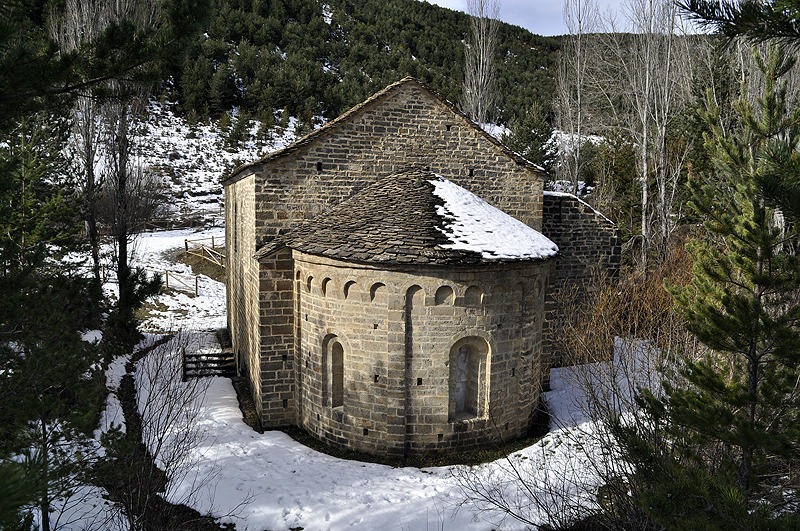Borau. Church of San Adrián de Sasabe. 11th to 12th centuries
The history of the visigothic church of St Adrián de Sasabe is full of mysteries and legends that link the location with telluric forces. It is known that it formed part of one of the most important monasteries in the history of Aragón and that it was head of the Huesca Diocese while the city was occupied by the Moors.
In the mid-11th century (1050), Ramiro I rebuilt the monastery and gave it to Garcia I together with other properties in the Borau valley, the Jaca plain and the Tena valley. The present church was built at this time, between the Calcil and Lupan streams, at the head of the Lubierre river and its location has been the principal source of problems for its conservation. The regular flooding of the streams resulted in the church being almost completely buried for centuries. It was only rescued between 1957 and 1961 and was declared a National Monument four years later.
The building is of extreme austerity and simplicity. It has a single nave with a wooden ceiling and a semicircular apse with a hemispherical vault. A square tower was added to the north side but only the lower part survives. It is accessed from the inside of the church.
In St Adrián de Sasabe it is possible to appreciate clearly the parallels between the Romanesque of Jaca and of Lombardy. These similarities are visible on the external apse and around the main doorway, both of which resemble those of Santa María de Iguacel. In both cases, ornamental reliefs in the shape of palms and checks are used. These elements, which are typical of the Romanesque in Jaca and which eventually extended along the length of the Santiago Pilgrimage Route, can also be found on a small doorway with a rounded arch located in the south wall.
In the mid-11th century (1050), Ramiro I rebuilt the monastery and gave it to Garcia I together with other properties in the Borau valley, the Jaca plain and the Tena valley. The present church was built at this time, between the Calcil and Lupan streams, at the head of the Lubierre river and its location has been the principal source of problems for its conservation. The regular flooding of the streams resulted in the church being almost completely buried for centuries. It was only rescued between 1957 and 1961 and was declared a National Monument four years later.
The building is of extreme austerity and simplicity. It has a single nave with a wooden ceiling and a semicircular apse with a hemispherical vault. A square tower was added to the north side but only the lower part survives. It is accessed from the inside of the church.
In St Adrián de Sasabe it is possible to appreciate clearly the parallels between the Romanesque of Jaca and of Lombardy. These similarities are visible on the external apse and around the main doorway, both of which resemble those of Santa María de Iguacel. In both cases, ornamental reliefs in the shape of palms and checks are used. These elements, which are typical of the Romanesque in Jaca and which eventually extended along the length of the Santiago Pilgrimage Route, can also be found on a small doorway with a rounded arch located in the south wall.
Jaca Tourist Office . [ Jacetania ]
Also consult...
¤ Monuments
¤ Nature
¤ Villages
¤ Sport
¤ Tourist Offices
¤ Museums and Interpretation Centres
Guided tours 360°
Ciudadela de Jaca
[Español] · [Inglés]
Monasterio de San Juan de la Peña
[Español] · [Inglés]
Fort du Portalet
[Español] · [Francés]
follow us in...




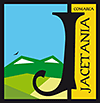 Comarca de La Jacetania
Comarca de La Jacetania
C/ Ferrocarril s/n 22700
JACA (Huesca)
T. (+34) 974 356 980
F. (+34) 974 355 241
:: Oficina de Turismo de JACA: 974 360 098
:: Oficina de Turismo de CANFRANC:
974 373 141
Site Map






